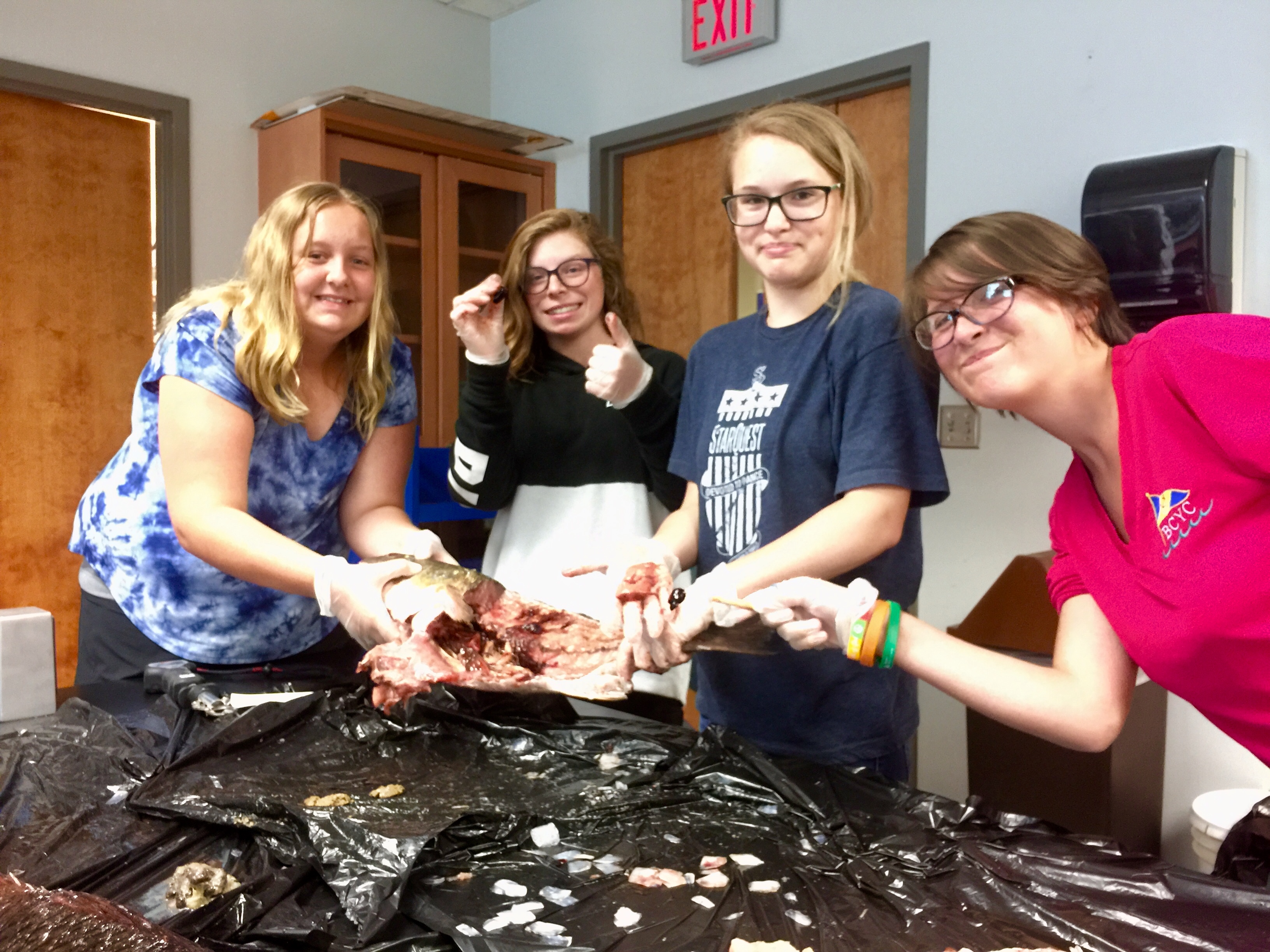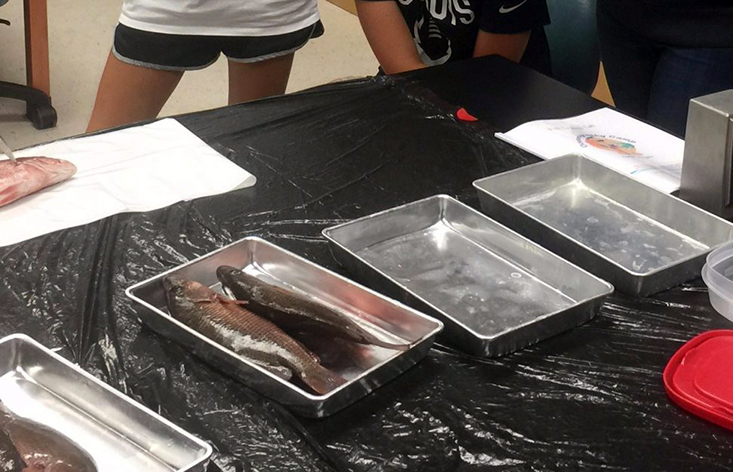This post was contributed by Liz Viau, science mentor & College of Marine Science graduate student.
Lab: Fish Ecology
Lab leaders: Michael Sipes (science mentor) and Liz Viau (science mentor & College
of Marine Science graduate student)
During my first year at OCG, I had the pleasure of leading the Fish Ecology Lab with fellow OCG Science Mentor, Michael Sipes. Over the course of two days, we learned all about internal and external anatomy of fishes as well as some unique characteristics we see across many different species. We also reviewed fish ecology, why it’s important, and how we utilize fish as a major resource around the globe.
Day 1 began with the question, “What is a Fish?”. The girls got a crash course on the common characteristics of fishes and the important local species we have here in the Tampa Bay area. Using a variety of preserved specimens and a very generous donation from Guy Harvey’s RumFish Grill Restaurant on St Pete Beach, the girls dove right in to external and internal anatomy. External anatomy included identifying the fin types and locations, mouth and body shapes, and the different scale types. These external features can tell scientists a lot about where a fish lives, how it behaves, and what it eats. As we moved to internal anatomy, the hair went up, the gloves went on, and the scalpels came out! Our specimens from RumFish Grill were a prized local species, Red Drum. The girls got to work and began identifying major organs such as the swim bladder and the specialized kidneys. They also performed some stomach content analysis on their fishes to examine the diets of these large fish. Lastly, Science Mentor Mike busted out the big guns and carefully sawed through our fishes skulls in order to examine brain tissue and extract the fishes otoliths, or “earstones”. The otoliths are a feature unique to bony fish and work with other sensory organs to help the fish determine where they are in the water and where other fish are, such as prey and predators. The Age and Growth Lab at FWRI contributed several slides of otoliths for the girls to examine under the microscope. We discussed how we utilize the otoliths to age the fish as well as the microchemical analysis we perform on them in order to determine migration patterns, diet, water temperature variation, and anthropogenic impacts.

Day 2 was all about how we study fish populations and why it is such an important part of the Marine Science field. We gave the girls a brief lecture on fisheries and the consequences of overfishing we have observed since its’ industrialization. We discussed the different fishing regulations that we currently use to manage our fish resources. To simulate the impacts of commercial fishing, we used skittles to represent different fish populations and had the girls “fish” the community without regulations in place. The activity results in a collapse of all fisheries and was a great way to depict the importance of successful management strategies. The hands-on portion of this lab day allowed the girls to get a feel for collecting field data about fish populations. Michael, an avid fisherman, brought in several Mangrove Snapper which the girls measured, weighed, and tagged. Once the data collection was complete, the girls learned how to filet their catch for consumption. They all did outstanding! We ended the lab by considering the impacts each of us have on our marine environment, how that directly and indirectly effects fish populations, and the best ways to reduce our impacts and increase our sustainability.
